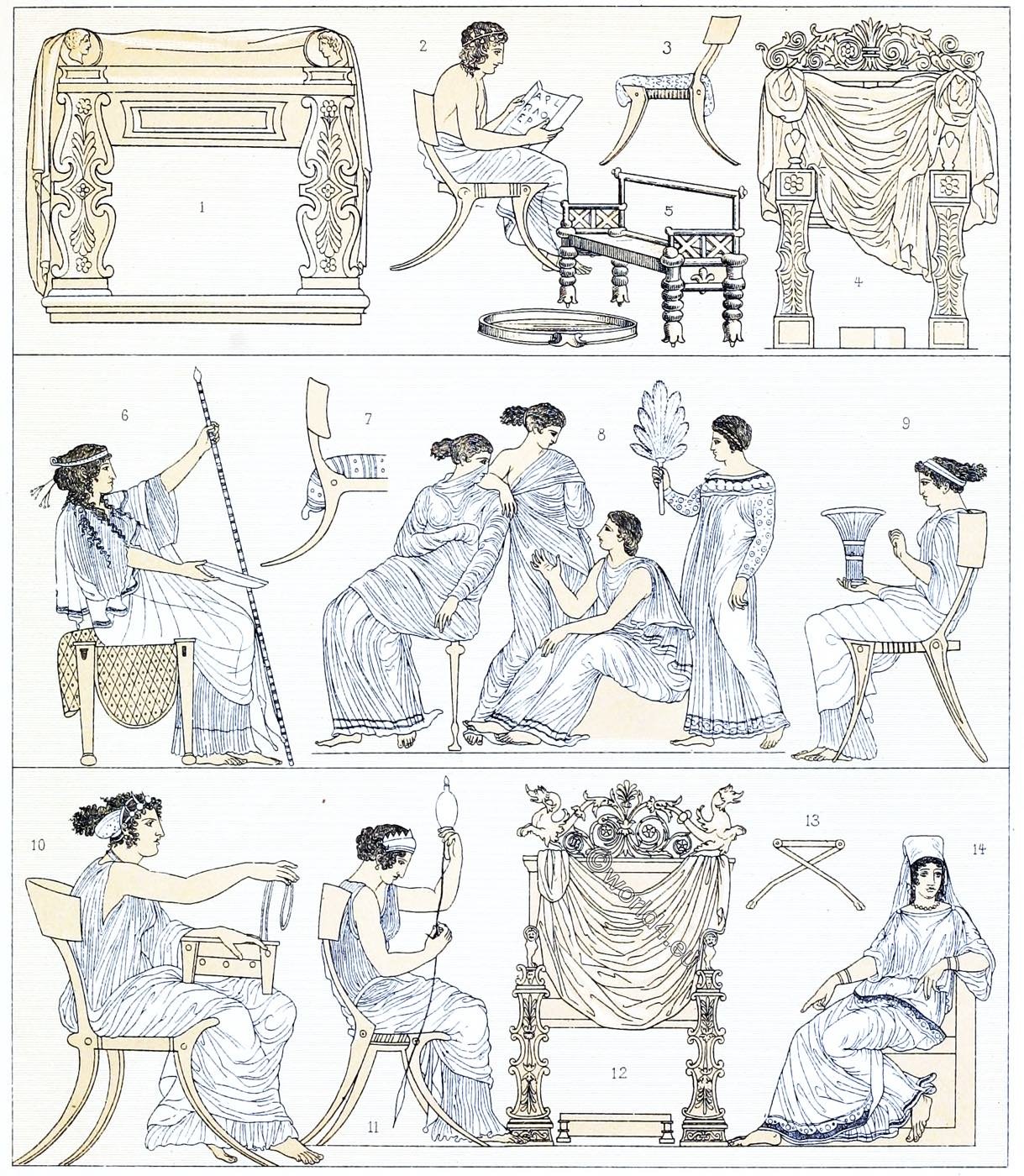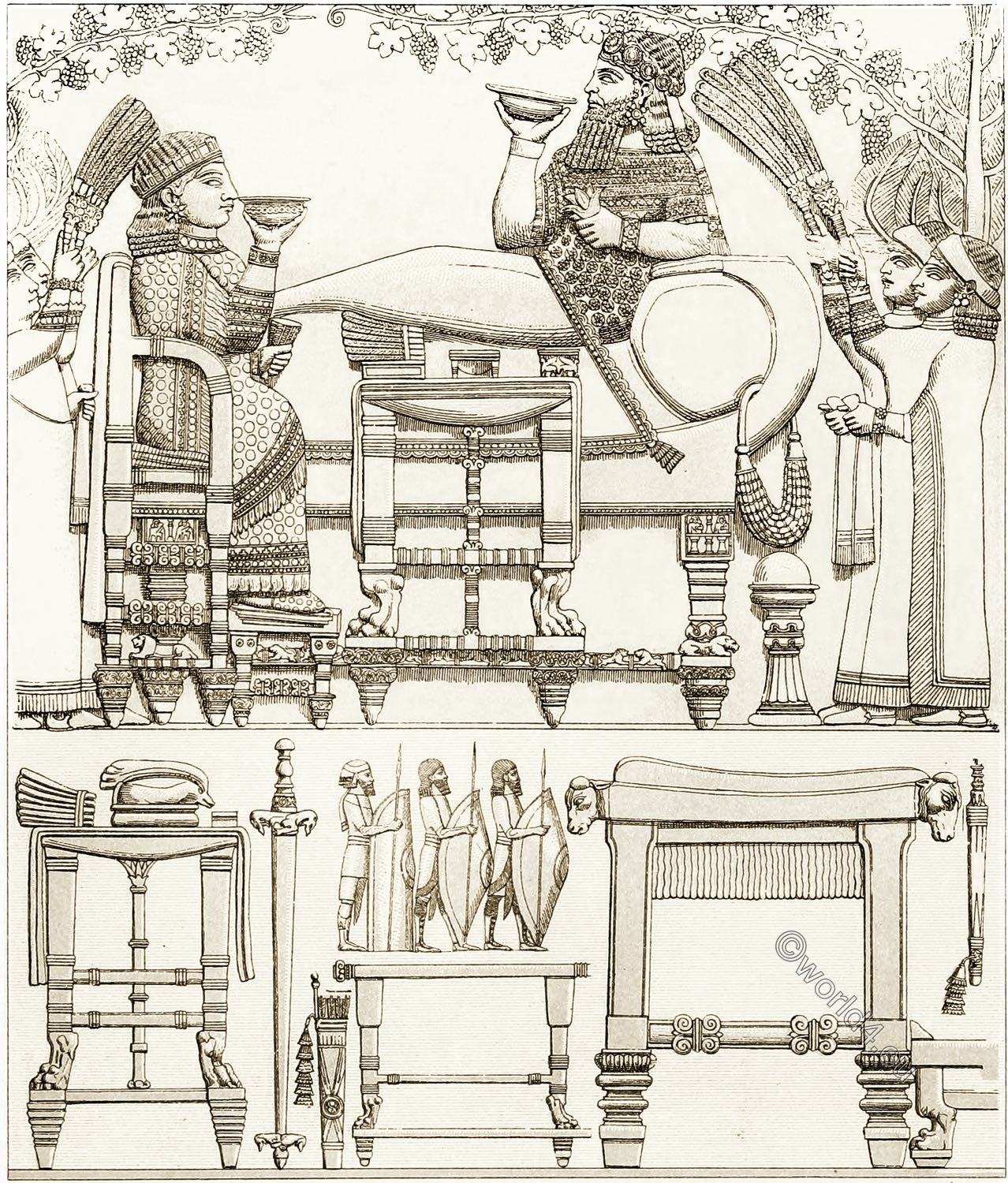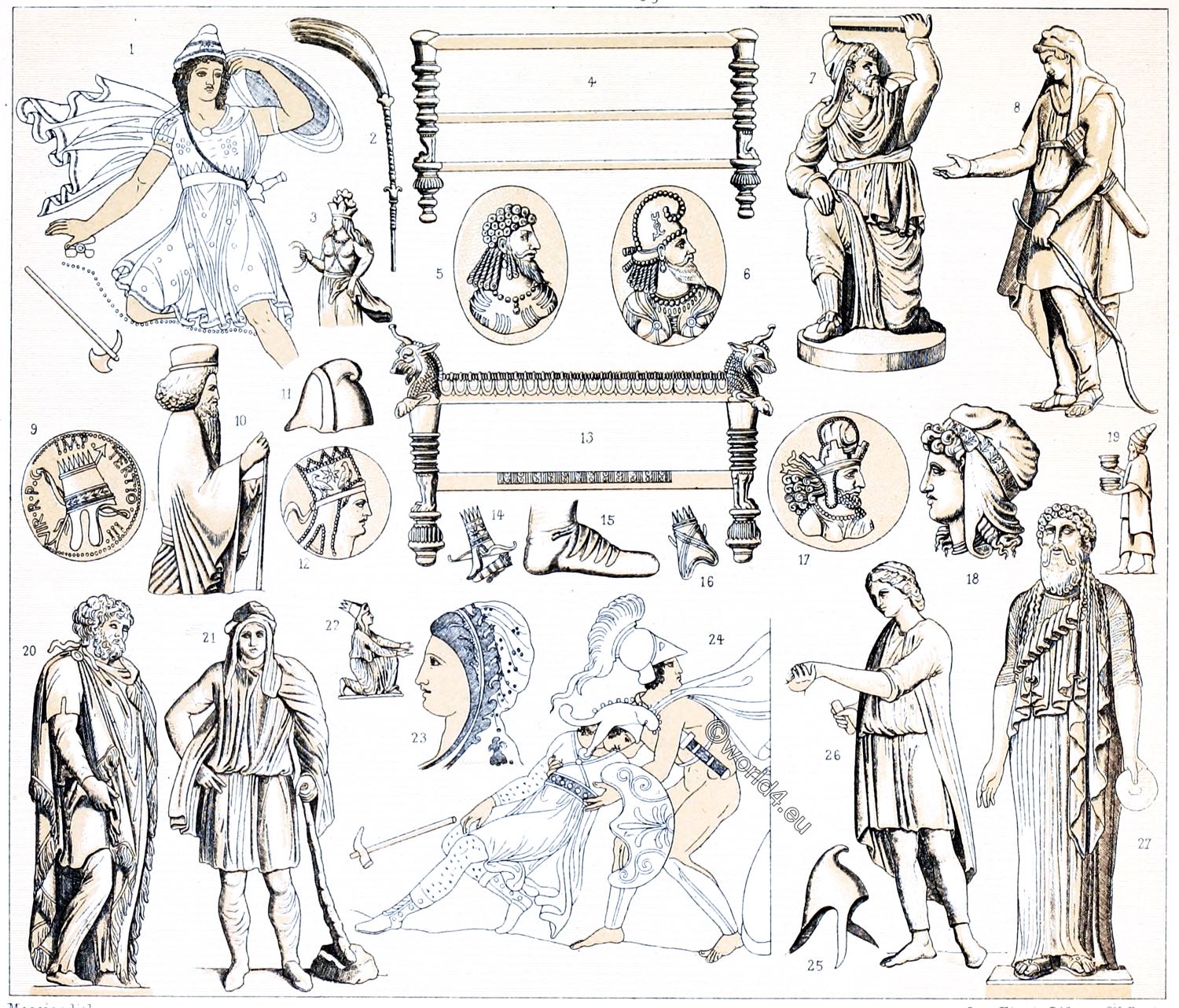
GREECE AND ROME. VARIOUS SEATING FURNITURE.
- Nos. 4 and 12. Throne chair. The throne, a magnificent seat with back and side rests and a more or less high base, was an attribute of the gods in Homer’s time and later of royal dignity. It was made of marble, ivory, precious woods, even gold, and decorated with reliefs. The foot bench connected to the seat, called Threnys by Athenaeus, was the characteristic feature of the throne. When it was available, simple chairs and armchairs (nos. 9, 10, 11, 1, 6) were also given this proud name. Sometimes this tread (suppedaneum in Roman times) consisted of two steps. Suidas reports that for women the top step was perforated and that glowing coals were placed underneath it to keep their feet warm.
- No. 1. Bisellium, chair without backrest, with blankets and cushions. It was common among the Romans for priests and other high-ranking persons, especially the Augustals *) when they were seen in public places, e.g. in the theatre, but it was also used by the Greeks.
*) Colleges of priests in the Roman Empire, which had been created for the cultic worship of the Roman emperors.
- No. 5. Seat in the form of a bank. It was placed in the rooms in which strangers and guests were received, to whom a large bowl for washing feet was offered as a first greeting.
- Nos. 2, 3, 7, 9, 10 and 11. Klismos, chair with backrest. Typical features of the Klismos are a slightly curved backrest and curved chair legs with feet pointing outwards. The Homeric heroes sat on chairs with backrests (Klismoi) or in armchairs (Thronoi), with Thronos emphasizing the honorary seat of Basileus. A footrest (Threnys) was placed under the table for grumbling comfort. The servants paused on Diphroi (armchairs without backrest). No. 2 with a curved backrest was used by philosophers and rhetors when they gave their lectures. As can be seen from nos. 3 and 7, the seat was covered with a cushion.
- No. 6. Armchair with four legs and a blanket. The figure sitting on it is Hera, receiving an offering.
- No. 8. A group of women, one of whom is sitting in an armchair similar to No. 6. Another sits on a low stool, which was used by women when they worked, by craftsmen and by other people with sedentary occupations.
- No. 13. Diphros, folding chair that could be folded and carried. The Diphros is a stool with four mostly turned legs. It is a seating furniture of gods and heroes as well as simple people. It is known from many depictions of ancient art. For the Romans who took it into the field, sella castrensis. It served the commander, later the emperor in his activities in the camp, e.g. when addressing his soldiers. When the noble Athenians went out, they had these chairs carried by slaves.
- No. 14. Fixed armchair with straight backrest and without armrests. The footrest seems to be one piece with the chair. The headdress of the sitting figure shows Asian character.
Nos. 1, 4 and 12 after reliefs in Palazzo Mattei in Rome, in Verona and in the Louvre in Paris. The remaining numbers after vase paintings at Willemin, Costumes des peuples de l’antiquité.
Source: History of the costume in chronological development by Auguste Racinet. Published by Adolf Rosenberg. Berlin 1888.


